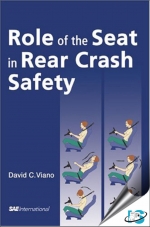Tab Article
Role of the Seat in Rear Crash Safety addresses the historic debate over seatback stiffness, energy absorbing yielding, occupant retention and whiplash prevention; and it provides a scientific foundation for the direction GM pursued in the development and validation of future seat designs. It also describes the multi-year research study into the role of the seat in rear crash safety - first by addressing the need for occupant retention in the more severe rear crashes; and then by addressing the needs for an adequately positioned head restraint and changes in the compliance of the seatback to lower the risks of the whiplash in low-speed crashes.


